#Olivera Despina Hatun
Text
THE SINS OF DESPINA HATUN
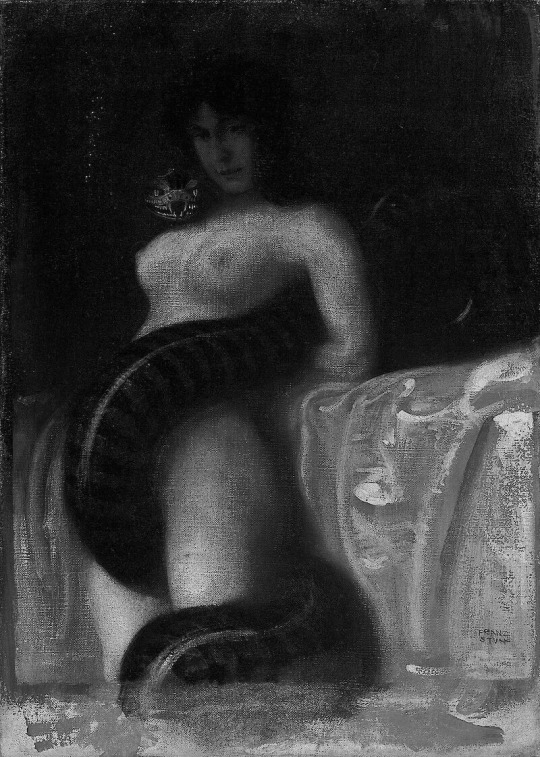
Since the 14th century, one woman has haunted the history of the Ottoman Empire and the very minds of their historians with her influence over a Sultan who suffered a hummiliating fate.
The only wife of a Sultan who has been the target of curses; Despina Hatun.
The reason for this great hatred of her has to do with the fact that she was influential and remain christian throughout her marriage. She was able to maitain the first and main place in the harem of her husband and to make him like her. A likeness that overtime grew into love and devotion.
Her wishes did not remain mere wishes, and for this reason the muslim associates of Sultan Yildirim Bayezid Han, as well as later Turksih historians resented her. Today most people remember her as “Bayezid’s great love”.
To Ottoman sources she was a fatal woman who lured their Sultan into sin. It can be concluded from that amount of hatred that she was allowed privileges and more power than was allowed for a foreign wife of a Sultan, or an imperial wife in general.
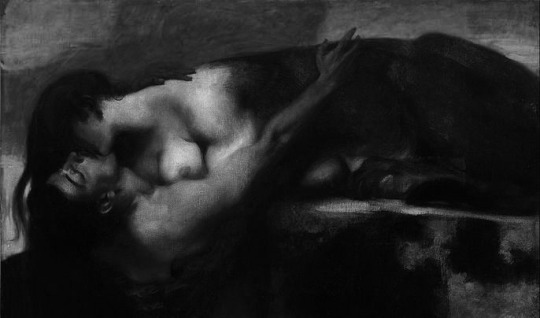
SHE MADE THE SULTAN FALL FOR HER
"As for Yıldırım, let's say that he fell in love with the princess." - Necdet Sakaoğlu. Bu Mülkün Kadın Sultanları, pg 83
"Throughout his life he was devoted to Despina, and his brother-in-law Stephen in turn was a devoted and steadfast friend." - Herbert Gibbons. The Foundation of the Ottoman Empire
According to Chalkokondyles, when Bayazit's favorite wife, Lazareva [daughter], whom he took everywhere with him into battle, was captured and handed over to Tamerlane, he ordered that wine be served to him there, in front of her husband. The enraged Bayazit told Tamerlane that what he was doing was not worthy of his father and mother. - Две српске султаније : Оливера Лазаревић (1373-1444), Мара Бранковић (1418-1487), pg 107
"When the latter's wife, the daughter of Lazar, whom he loved more than any of the others, had been taken away, and Timur was taking her around in the camp with him, he made her pour his wine in front of Bayezid, her husband." - Laonikos Chalkokondyles
"He kept her close – she accompanied him everywhere - he appeared unable to part from her. She was the one person, who influenced him most and was of course blamed by the Ottoman chroniclers for the fall of Beyazid’s empire into the hands of Timur. They considered the young sultan totally captivated by her."- Anna Buxton. The European Sultanas of the Ottoman Empire
It is widely understood that throughout their marriage Despina and Bayezid shared a devoted sentiment-perhaps more on his part-despite the circumstances that brought them together. The couple had similar interests such as politics, wine, partying, European customs, conversations and according to historians found constant erotic pleasure with each other. Though all of these cited interests might just be Ottoman historians attempts to depict this woman as deceitful.
" The sexually robust woman – she satisfies all his desires- but remains a Christian." - Richard Franz Kreutel performs a service to Ottoman polemic.
It is said that for some days, Bayezid remained in Despina's chamber and completely forgot about state affairs.
Olivera (Despina Hatun) is accused by Ottoman historians of using her charms and beauty to lure Bayezid to her. This seems highly untrue as Bayezid's harem is labeled as being filled with "forbidden beauties." He could have set his sight on another with more charm and beauty, and in fact he did, but still remained devoted to Despina.
It seems they use her beauty and political influence only as a means to label her as a Femme Fatale who is cunning, power-hungry and worst even, an infidel. Yet, when we look at foreign sources about the personality of Despina Hatun, she is describe as being gentle and flowery.

SHE WAS ALLOWED POLITICAL INFLUENCE
According to Dr. Zeljko Fajfric in his work "Srpske kraljice i princeze," released in 2007, no sultana before Olivera, who did not convert to Islam, managed to become so influential.
Yet something that is enough to critize him on is that he only puts this influence of hers to be due to her charms and beauty, yet again unintentionally labeling her as a femme fatale.
If beauty was all it took to have political influence, dozens more like her would have succeeded in that aspect, but she remains the only wife of Bayezid who had significant importance on politics.
Either Bayezid often sought after her opinion in matters of state or he took her as an advisor which might be the reason she was often with him, but no, a good scent, a soft spoken voice, long hair or enchanting glances will work, at least not for very long, even for a man prone to pleasure like Bayezi, and as we know Despina's political influence grew more with time than it decline.
A few things that are attributed to her council...
I: She helped accelerate the transfer of Prince Lazar's body back to Serbia.
II: She freed and paid ransoms for enslaved christians with the help of her brother; Stefan.

SHE BROUGHT DEBAUCHERY TO THE OTTOMAN COURT
Despina is often blamed for having introduced wine at the Ottoman court.
This sin that Bayezid's partook in can not be credited to Despina because he was already throwing such feasting assemblies ever since his princehood. Him and Despina married in 1390, he was well too familiar with wine and pleasure prior to their marriage.
Despina, later on, might have organized such festivities for him.
" Wine and kebab assembly was established. The infidel's daughter came and toasted Ali Pasha. The lady said, see the moment." - Aşıkpaşazade.
Still it is highly unlikely that Despina, who comes from a culture where married women do not speak in the presence of men would even partake in such assemblies filled with drunk men.
What is more likely is that she organized her own wine assemblies in the harem, with the presence of other women, but the chances of her doing such a thing as drinking in the presence of men is highly unlikely.
She might have even brought wine and so called debauchery to the once "pious" court of the harem, but as for the men; who take up the majority parties in politics and war, they were already familiar with the beverage.
#Bayezid#Sultan#Yildirim#Bayezid The Thunderbolt#SultanBayezid#Sultan Bayezid#Olivera Despina Hatun#Despina Hatun#DespinaHatun#Mileva Olivera Lazarević#medieval#middle ages#ottoman empire#Ottoman#Maria Hatun#lazarevicdynasty#Lazarevic Dynasty#Ottoman Dynasty#Maria Olivera Lazarevic#Domina Despina#yildirim bayezid#Ottoman Poetry#Ibn Kemal#15th century#16th century#Lazarevic dynasty#Serbia#Turkey#Osmanli#despinahatun
277 notes
·
View notes
Text
evil-serbian-girl replied to your photoset “�������������� ���������������� : Bayezid I”
Hello! :) I don't know do you answer on replies (I can't send you message), but I'm gonna ask anyway:
you can’t send me any messages because my askbox is closed.
Do you maybe know were other Bayezid wives, beside Olivera, captured by Timur? Lately, I've been doing some research on the internet about her, beside Serbian I was reading English and google-translated Turkish articles, and I haven't found any mentions of Devletšah or Hafsa related to the aftermath of the battle of Ankara. What happened to them after the battle, why is only Olivera mentioned in captivity?
This is what Peirce had to say about it: "The earlier capture of Bayezid I by Timur may offer indirect evidence that concubines were separated from the sultan: it was Bayezid's wife Maria who was with him at the time of his capture, suggesting she must have accompanied the sultan on campaign." -- The Imperial Harem: Women and Sovereignty in the Ottoman Empire
Also, I saw in couple of your mentions of Olivera that you wrote that she was forced to serve Timur half-naked, which, as far as I understood, IS popular belief, but are there any proofs for that? She was released after Bayezid's death, but, if those stories are true, why would they let her go when they could make a slave out of her? Also, I read somewhere that Timur married their daughter to his grandson, so, if that is true, would he really treat his in-laws like that?
That she served Timur is said - among others - by Hammer: (i’m translating from French) “One day, at a feast, he [Timur] went so far as to openly violate the sacred customs of the harem: he had the wine presented by Bayezid’s wife, the Serbian Princess...”. His sources were Demetrios Chalkokondyles and Muhammad ibn Arabshah; Arabshah was apparently alive during Timur’s reign and had followed him closely so I guess he can be trusted.
Taking conquered rulers’ wives as prisoners was common among Muslim rulers, even the Ottomans did it: "Women captured from the families of conquered rulers, especially their consorts, continued to be a valued symbol of Ottoman victory as late as the sixteenth century. The Byzantine historian Doukas tells us that Mehmed II departed from Constantinople twenty days after its conquest, "taking with him in wagons and on horseback all the [Byzantine] noblewomen and their daughters." Selim I, whose conquests made the Ottoman state a world empire, captured Taçlu Khatun, the wife of the Safavid ruler of Iran, at the decisive battle of Chaldiran in 1514 and refused to return her, instead giving her to one of his leading statesmen. As late as 1553, Süleyman's consort Hürrem wrote to the sultan, who was campaigning against the Safavids, lamenting the lack of a sign of victory that would content the people of Istanbul, such as the capture of the shah's wife or son. As Hürrem's letter suggests, hostage sons of rival dynasties were also valued prizes of conquest, visible proof of the inability of the defeated ruler to protect his household and, by extension, his domain." -- Peirce, The Imperial Harem: Women and Sovereignty in the Ottoman Empire
As for Despina’s daughters, both Uluçay and Öztuna say she had had two with Bayezid I and apparently they were still young at the time. According to Öztuna the two daughters were: Paşa-Melek and Oruz. Paşa-Melek apparently married Dâmâd Emîr Celaluddîn İslâm in 1403, but he was not Timur’s son; he was one of his military commanders. As for Oruz, Öztuna doesn’t say who her husband was but she had a daughter called Ayşe Hâtûn.
There is, though, another daughter of Bayezid who is unfortunately unnamed: she married Dâmâd Ebû-Bekr Mirza, a grandson of Timur, in 1403.
About Despina’s fate after Bayezid I’s death, both Uluçay and Sakaoğlu say that we don’t know anything about it. If she was released, I guess she was not important anymore as her husband had died.
36 notes
·
View notes
Photo

Family of Yildirim Bayezid.
#bayezid i#bayezid#yildirim bayezid#devlet#devlet hatun#devletşah#devletshah#devletşah hatun#maria olivera despina#olivera despina#maria olivera despina hatun#hafsa hatun#hafsa#süleyman çelebi#suleiman celebi#isa çelebi#isa celebi#musa çelebi#musa celebi#isa#musa#suleiman#hundi#hundi hatun#fatma#fatma hatun#irhondu#irhondu hatun#oruz#oruz hatun
13 notes
·
View notes
Text
Bayezid
Bayezid I , nicknamed Yıldırım (Ottoman: ییلدیرم), "Thunderbolt"; 1354 – March 8, 1403) was the sultan of the Ottoman Empire from 1389 to 1402. He was the son of Murad I[1][2] and Valide Sultan Gülçiçek Hatun. Bayezid ascended to the throne following the death of his father Murad I, who was killed by Serbian knight Miloš Obilić during (June 15), or immediately after (June 16), the Battle of Kosovo in 1389, by which Serbia became a vassal of the Ottoman Empire. Immediately after obtaining the throne, he had his younger brother strangled to avoid a plot. In 1390, Bayezid took as a wife Princess Olivera Despina, the daughter of Prince Lazar of Serbia,[3] who also lost his life in Kosovo. Bayezid recognized Stefan Lazarević, the son of Lazar, as the new Serbian leader (later despot), with considerable autonomy.
From 1389 to 1395 he conquered Bulgaria and northern Greece. In 1394 he crossed the River Danube to attack Wallachia, ruled at that time by Mircea the Elder. The Ottomans were superior in number, but on October 10, 1394 (or 17 May 1395), in the Battle of Rovine, on forested and swampy terrain, the Wallachians won the fierce battle and prevented Bayezid from conquering the country. Meanwhile, he begin the reunification of the Turkish Anatolia, conquering the beyliks of Aydin, Saruhan in 1390, the beyliks of Mentese, Germiyan and Kastamonu in 1391; and finally the great emirate of Karaman and the ex-emirate of Burhan-ad-Din in Tokat, Sivas and Kayseri(1397–98). Next he occuped the cities of Malatya and Elbistan, in a war with the mamluk sultan of Egypt.
In 1394, Bayezid laid siege to Constantinople,[4] the capital of the Byzantine Empire. Anadoluhisarı fortress was built between 1393 and 1394 as part of preparations for the Second Ottoman Siege of Constantinople, which took place in 1395. On the urgings of the Byzantine emperor Manuel II Palaeologus a new crusade was organized to defeat him. This proved unsuccessful: in 1396 the Christian allies, under the leadership of the King of Hungary and future Holy Roman Emperor (in 1433) Sigismund, were defeated in the Battle of Nicopolis. Bayezid built the magnificent Ulu Camii in Bursa, to celebrate this victory.
Thus, the siege of Constantinople continued, lasting until 1402.[5] The beleaguered Byzantines had their reprieve when Bayezid fought the Timurid in the East.[6] At this time, the empire of Bayezid included Thrace (except Constantinople), Macedonia, Bulgaria, and parts of Serbia in Europe. In Asia, his domains extended to the Taurus Mountains. His army was considered one of the best in the Islamic world. In 1400, the Central Asian warlord Timur succeeded in rousing the local Turkic beyliks that had been vassals of the Ottomans to join him in his attack on Bayezid, who was also considered one of the most powerful rulers in the Muslim world during that period. In the fateful Battle of Ankara, on 20 July 1402, Bayezid was captured by Timur and the Ottoman army was defeated. Many writers claim that Bayezid was mistreated by the Timurids. However, writers and historians from Timur's own court reported that Bayezid was treated well, and that Timur even mourned his death. One of Bayezid's sons, Mustafa Çelebi, was captured with him and held captive in Samarkand until 1405. Four of Bayezid's sons, specifically Süleyman Çelebi, İsa Çelebi, Mehmed Çelebi, and Musa Çelebi, however, escaped from the battlefield and later started a civil war for the Ottoman throne known as the Ottoman Interregnum.[7] After Mehmed's victory, his coronation as Mehmed I, and the death of all four but Mehmed, Bayezid's other son Mustafa Çelebi emerged from hiding and began two failed rebellions against his brother Mehmed and, after Mehmed's death, his nephew Murat II.
#Stefan Lazarević#Ottoman Empire#Murad I#Miloš Obilić#Constantinople#Byzantine Empire#Byzantine#Battle of Rovine
0 notes
Text
I. Bayezıd / Yıldırım
I. Bayezıd / Yıldırım
Osmanlı Devleti’nin 4. padişahıdır.
Babası: I. Murad Hüdavendigar
Annesi: Gülçiçek Hatun
Doğumu: Edirne 1360
Vefatı: Akşehir, 8 Mart 1403
Saltanatı: 1389-1402
Türbesi: Bursa Yıldırım Bayezid Camii yanındaki türbede
Eşleri: Angelina Hanım, Devlet Şah Hatun, Maria Hatun, Hafsa Hatun, Sultan Hatun, Mileva Olivera Despina Hatun, Devlet Hatun
Erkek Çocukları: Musa Çelebi, Süleyman Çelebi, Mustafa…
View On WordPress
0 notes
Text
BEST OF BOTH WORLDS
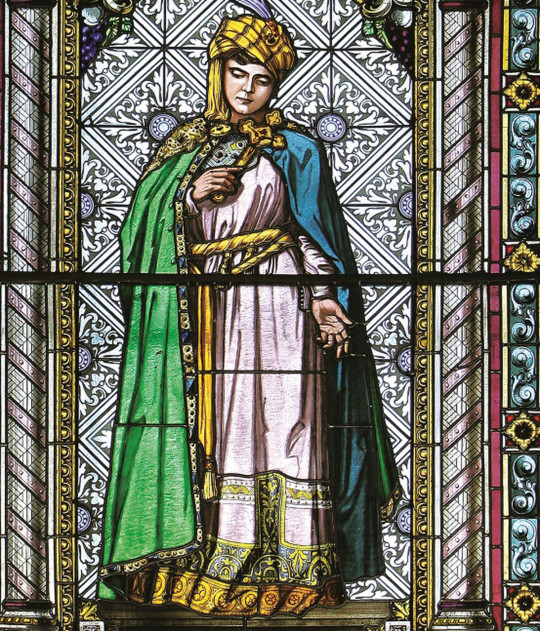
Depiction of Despina Hatun on one of the stained glass windows in placed on the north facade of St. George Cathedral in Novi Sad.
Created in 1902 by Hungarian artist Imre Zseller ( 1878-1959).
The stained glass depicts Despina Hatun holding a cross; showing her devotion to her faith. Something interesting and catching about her attire is that adding to her simple Serbian clothing she also has a golden turban adorned on her head; depicting her liaison to both the Lazarevic and Osman Dynasty.
( Source: Osmanlı Sarayı’nda Bir Sırp Prenses: Mileva Olivera Lazarevic by Mustafa Çağhan Keskin )
#Bayezid#sehzade bayezid#Sultan#Yildirim#Bayezid The Thunderbolt#SultanBayezid#Sultan Bayezid#Olivera Despina Hatun#OliveraDespinaHatun#mariaoliveralazarevic#maria olivares#Despina Hatun#DespinaHatun#Mileva Olivera Lazarević#medieval#middle ages#ottoman empire#Ottoman#Maria Hatun#Mariahatun#Oliverahatun#cathedral aesthetic#Cathedral#stained glass#stained art#turban#lazarevicdynasty#Lazarevic Dynasty#Ottoman Dynasty#vintage
4 notes
·
View notes
Text
A DIVINE BEAUTY IN EDIRNE

"Laz Bey had a fortunate daughter whose beauty was like that of an immaculate houri of paradise, flawless and noble, free in her beauty like a tall cypress tree, distinguished among beauties as a fairy born." - Kemalpaşazâde.
With this poem of his time, Kemalpaşazâde draws attention and describe the beauty of Despina Hatun as divine-like grace to the world.
" Distinguished among beauties as fairy born." In this last part of the poem elevate the physical attributes of Despina Hatun as being unattainable even to those who are considered beautiful.
#Bayezid#Sultan#Yildirim#Bayezid The Thunderbolt#SultanBayezid#Sultan Bayezid#Olivera Despina Hatun#mariaoliveralazarevic#Despina Hatun#DespinaHatun#Mileva Olivera Lazarević#medieval#middle ages#ottoman empire#Ottoman#Maria Hatun#stained glass#lazarevicdynasty#Lazarevic Dynasty#Ottoman Dynasty#Maria Olivera Lazarevic#Domina Despina#yildirim bayezid#poetry#Ottoman Poetry#Ibn Kemal#Şemseddin Ahmed#Kemalpaşazâde#15th century#16th century
3 notes
·
View notes
Text
Despina Hatun In Fiction I
ZABINA

The earliest work of fiction, other than some verbal legends about the aftermath of the Battle of Ankara is " Tamburlaine the Great " by English dramatist; Christopher Marlowe ( 1564-1593 ).
The play published in 1590, which focuses mainly on Timur and the brutality of conquests, also includes side characters like Bayezid I and Zabina; who are heavily based on the real Sultan Bayezid and Olivera Despina Hatun ( Zabina ).
Zabina, the Empress of Turkey and wife of Bayezid is captured with her husband by Timur and forced to endure humiliation as well as abuse. In the end, Bayezid could not bear it anymore and bashed his head on the golden cage he was forced into with his wife, brutally ending his life.
Heartbroken by the humiliation bestowed on her husband and his tragic death, Zabina then does the same, following her husband's actions, and ending her own life in the end.
This play is clearly a dramatized tale of the actual events that took place during the couple's captivity. However, there are a few things the play got right and wrong, such as the tragic ending of Bayezid. His reason for ending his life was the humiliation Despina Hatun had to endure. ( I believe he knew if he died the abuse towards her would end and she like the other Serbs captured on the Battlefield would be released. )
Though Zabina died, Olivera did not. Timurid sources state that she was released and sent back to her home in Bursa, where it will be assumed she attended her husband's funeral in the company of her stepson; Musa, who was also in captivity with them.
Adding on, Franchelle Stewart looks fab in that full attire 🫶👑
#fabric#geology#Bayezid#sehzade bayezid#Sultan#Yildirim#Bayezid The Thunderbolt#SultanBayezid#Sultan Bayezid#Olivera Despina Hatun#OliveraDespinaHatun#mariaoliveralazarevic#maria olivares#fabric design#fabric crafts#Despina Hatun#DespinaHatun#Mileva Olivera Lazarević#medieval#middle ages#ottoman empire#Ottoman#Maria Hatun#Mariahatun#Oliverahatun#lazarevicdynasty#play#theatre#opera#Tamburlaine The Great
3 notes
·
View notes
Text
A Memory Of Bayezid From Olivera

( Though the screenshot is black and white, the original tone of the textile is more golden with preserved green, red, and light blue patterns, combined with Arabic texts in black, despite the age.)
The only close physical memory of Olivera and Bayezid. This textile with Ottoman designs and silk texture is one memory we have of both Olivera and Bayezid.
The relic that was donated in the 1400s is about 2.18 meters ( 7'1 feet or 86 inches ) in length and 1.42 meters ( 4'6 feet or 56 inches ) in width.
The text spells " Sultan Bayezid " in Arabic, aiming to the idea that it was made for him and eventually got into the hands of Olivera and made its way to the Studenica Monastery; one of the eldest monasteries built by one of Olivera's ancestors.
Though there are many legends as to how the silk textile ended up in the Monastery, my personal opinion is that Olivera donated the textile after realizing she was gonna die soon and wanted people to remember not herself but her perished lover. ( I'm delusional )
( Sources: Osmanlı Sarayı’nda Bir Sırp Prenses: Mileva Olivera Lazarevic by Mustafa Çağhan Keskin. )
#textile#fabric#relic#geology#arabic#Bayezid#sehzade bayezid#Sultan#Yildirim#Bayezid The Thunderbolt#SultanBayezid#Sultan Bayezid#Monastery#Olivera Despina Hatun#OliveraDespinaHatun#mariaoliveralazarevic#maria olivares#silk#fabric design#fabric crafts#Despina Hatun#DespinaHatun#Mileva Olivera Lazarević#medieval#middle ages#ottoman empire#Ottoman#Maria Hatun#Mariahatun#Oliverahatun
4 notes
·
View notes
Text
Sir Milos Obilic Fell For The Princess

Whether or not Sir Milos Obilic even existed is of no importance as a story started going around Serbia that Milos Obilic, a prodigy and loyal knight of Prince Lazar had fallen for the ethereal Olivera and went as far as asking for her hand in marriage.
It is of no surprise that Sir Milos Obilic; who was a respected knight at the time would often be a visitor at Lazar’s court, it is most likely during his frequent visits that he met and interacted with Princess Olivera. It is also probable that they also interacted during knight tournaments that Olivera and her mother often led.
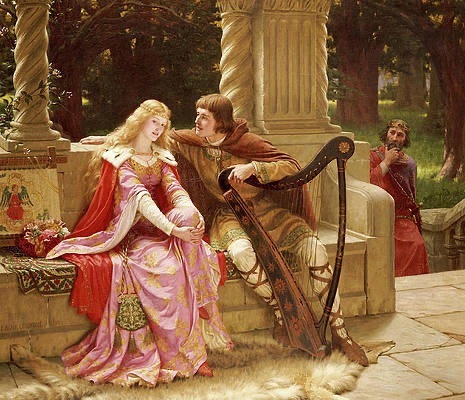
His infatuation with her led to a marriage proposal sent to Lazar from Sir Milos Obilic, but his proposal was rejected by Lazar with the excuse that she was too young and not yet mature to marry.
There is no clear evidence or any narration of Princess Olivera returning the same sentiment he had for her. She may never wish to marry him or had not yet found a desirable candidate in her sample of suitors and that might be why Lazar used the excuse of her age to peacefully reject the marriage proposal.

There are a few reasons why Lazar rejected Milos’s proposal one being that Princesses usually married out of their dynasty by birth to create new alliances and produce children of both dynasties. Lazar married all his other daughters outside of his realm for political games, the same would have happened with Olivera, and since Milos was already a knight of Lazar’s dynasty it wouldn’t be politically beneficial to marry his daughter to him.
Another reason is that though knights are noble and quite rich, they belong to the lower nobility and all of his other daughters married into influential families, sons of rulers or rulers themselves, Lazar was more likely planning on doing the same for Olivera and marrying her into a strong foreign political family.
#geology#mariaoliveralazarevic#Oliverahatun#DespinaHatun#Hatun#Sultana#Lazar#Knezlazar#LazarevicDynasty#medievalserbia#PrincessMilica#MilicaNemanjic#MilicaHrebeljanovic#Moravianserbia#knights#knighttournaments#oliverdespina#childhood#princess#Despina Hatun#Olivera Despina#Olivera Hatun
11 notes
·
View notes
Text
DESPINA HATUN IN FICTION II
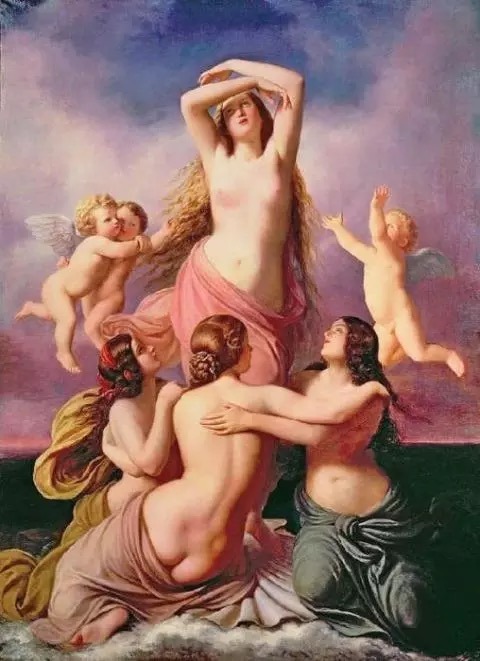
“Olivera; this blonde beauty of the Slavic race had a body as beautiful as Venus and coquetry as a Cleopatra (…) She was a woman with blond hair, blue eyes, a slim waist, and a nice figure. With this beauty of hers, she could have captured anyone she encountered. "Here was a great ruler who dominated the world, this woman's slave, the toy of her desires." Enver Benhan Sapolyo describes Bayezid's love for Olivera with these sentences. ---> Osmanlı Sarayı’nda Bir Sırp Prenses: Mileva Olivera Lazarevic by Mustafa Caghan Keskin.

The novel that was release to the public in 1944 follows the usual hatred and scapegoating by Ottoman/Turkish historians to Despina Hatun. As always it starts with compliments towards her beauty and charms and ends with distain towards her person.
By comparing her to Cleopatra, Şapolyo draws attention to the false idea that like Cleopatra, Olivera used her beauty and flirtations to make a devoted slave out of Bayezid/Yildirim.
Cleopatra wasn't a seductress and neither was Despina Hatun. Both women were highly educated and had leading personalities that played in their favor during their times.
Cleopatra wasn't as beautiful as many believe, she was a scholar, a woman with a wise tongue, that's how she attracted. And though by the statements of many Turkish sources who often describe the beauty of Despina Hatun as ethereal. I do not believe that in a harem full of beautiful concubines, beauty is what kept Despina Hatun in high status in the eyes of Sultan Bayezid, even if she was the most beautiful and alluring during Bayezid's reign.
It ( her beauty ) might have attracted him to her, but beauty does only that. It attracts, it does not keep and maintain one's devotion to another, especially for 12 years.
------------------------------------------------------------------------------
Arriving at the end of the novel he ( Şapolyo ) finish his novel by making Despina Hatun turn into a seductress no longer interested in Bayezid. no no no, his version of Despina Hatun has her eyes set on a bigger target; Timur. Yes, the same man who could have possibly made her serve him half naked at a banquet during her captivity.
The heartbroken Bayezid spits in the direction of Despina's face (as one does) then calls her a b!tch (because why not just add that in) and then take his own life by drinking poison.
This novel like many Turkish beliefs about Despina Hatun scapegoat her for Bayezid's own demise. It ignores the trauma she suffered by not only her own humiliation but also her husband.
Overall the whole novel is yet again a scapegoat projects of Turkish writers. I woudn't read it, neither will I even think of spending money on it.
I'll give it a 1.5/10. 1 for decent scapegoating. 0.5 for imagination and creativity, it would have been a whole 1, but the plot has been done before.
#geology#mariaoliveralazarevic#Oliverahatun#DespinaHatun#Princessmariaoliveralazarevic#Mariahatun#Hatun#Sultana#LazarevicDynasty#medievalserbia#royalife#Moravianserbia#oliverdespina#Milevaolivera#princess#Despina Hatun#Olivera Despina#Olivera Hatun#BayezidI#Bayezid I#sultan bayezid#Bayezid The Thunderbolt#Bayezidthethunderbolt#Yildirim Bayezid#YildirimBayezid#Yıldırım Beyazıt#YıldırımBeyazıt#Enver Behnan Şapolyo#EnverBehnanŞapolyo#novel
2 notes
·
View notes
Text
CHILDREN OF DESPINA HATUN

………. Hatun ( unknown name ) - Married Damad Ebu Bekir Mirza, son of Miranshah Mirza during or after Bayezid's captivity.
Pasa Melek Hatun - Married Damad Emir Celaluddin Islam son of Emir Şemseddin Mehmed; one of Timur's generals during or after Bayezid's captivity.
Oruz Hatun - Married an unknown man.
Oruz had a daughter named Ayse Hatun.
#geology#mariaoliveralazarevic#Oliverahatun#DespinaHatun#Princessmariaoliveralazarevic#Mariahatun#Hatun#Sultana#LazarevicDynasty#medievalserbia#royalife#oliverdespina#Milevaolivera#princess#Despina Hatun#Olivera Despina#Olivera Hatun#Oruz hatun#Oruzhatun#Pasamelekhatun#Pasa Melek Hatun#Bayezid I#Bayezid The Thunderbolt#Yildirim Bayezid#Timur#Timurid Dynasty#House of Osman#ottoman empire#Ottoman#Battle of Ankara
2 notes
·
View notes
Text
The Early Life Of Despina Hatun
Maria Olivera was born around 1372-1373 possibly late 1372 or early 1373 in the rich capital of Krusevac as the youngest daughter of Great Prince Lazar and Grand Princess Milica.
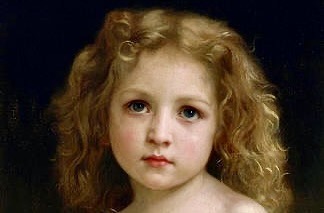
Alike of many other European societies during the Middle Ages, education in Moravian Serbia, for those who could afford it started at a pretty young age, 5-7 years of age.
Her father; Lazar made sure to open various public schools near monasteries for the less fortunate and opened a private one in the court of Krusevac for his own children and other children of the court; in other words other children of nobility, possibly also containing her ladies in waiting and companions.
The schools were led by priests and monks who offered knowledge in Christian theology and philosophy, writing, and reading in their mother's tongue.
Her early life was mostly filled with education, education and more education. (The children of Prince Lazar were considered the most educated in their time.)
Apart from school, from private foreign tutors and under the strict supervision of her mother; Grand Princess Milica, and aunt; nun Jefimija she learned Latin, Greek, mathematics, singing, literature, and the secrets of diplomacy and etiquette for a Princess.
She also learned how to run a household from her mother, either by observing or by her mother educating her on the topic of becoming the mistress of the house.
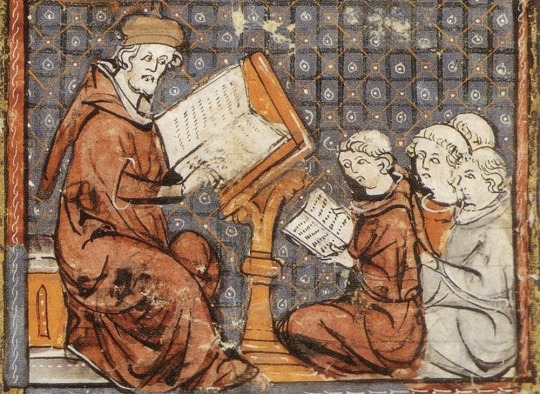
When away from her studies, Olivera was likely preoccupied with the various musicians, jesters, actors, weavers, tailors, magicians, and preachers coming for a quick stay at her father's court, who offered her temporary entertainment like songs, plays, clothing, and jewerly.
Like the rest of her family, Olivera was passionate about literature and art.
The palace of Krusevac contained a large library where the royal children were educated. The library contained various native and foreign translated scriptures, the foreign scriptures in question were Greek, Arab and Indian. containing history as well as fiction; which Olivera seemed to be a fan of, as she would later become a patron of art and literature.
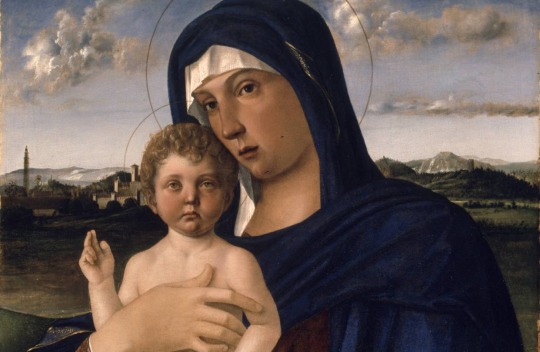
In 1381, the family suffered the loss of the youngest prince; who unfortunately died in infancy.
Years later between 1387 and 1388, Olivera's elder unmarried sister; Teodora was married off and left the capital leaving Olivera as the only unmarried Princess.
Some sources claim that growing up Olivera was the favorite of everyone, the people, her parents, her sisters, and her younger brothers, but perhaps this legend was due to her sacrificial marriage.

Though all Lazarevic members participated in the knight tournaments, especially the princes. Olivera as the rest of the female family members most likely stayed on the sidelines to watch.
Her life was mostly filled with duties and education, but she did have time for other activities and hobbies like art, literature, and knight tournaments. She seemed to have a rich and peaceful life up until The beginning of 1389.
( Sources: „Књижевни лик кнеза Лазара у старој српској књижевности." Od roda Nemanjića by Dr Miladin Stefanović. Book: Daily life in medieval Serbia by Marko Popović, Smilja Marjanović-Dušanić, Danica Popović.)
#geology#mariaoliveralazarevic#Oliverahatun#DespinaHatun#Princessmariaoliveralazarevic#Mariahatun#Hatun#Sultana#StefanLazarevic#despotstefan#Lazar#Knezlazar#tsarlazar#JelenaLazarevic#LazarevicDynasty#medievalserbia#PrincessMilica#MilicaNemanjic#MilicaHrebeljanovic#royalife#Moravianserbia#knights#knighttournaments#oliverdespina#Milevaolivera#childhood#princess#Despina Hatun#Olivera Despina#Olivera Hatun
4 notes
·
View notes
Note
Hi, i was just asking can you list consorts that were of noble birth.
Mal Hatun (consort of Osman I): probably the daughter of the ruler of the umeri principality
Asporça Hatun (consort of Orhan): probably the daughter of a byzantine lord
Theodora Kantakuzenos (consort of Orhan): byzantine princess
Tamara Hatun (Murad I): Bulgarian princess
Olivera Despina Hatun (Bayezid I): Serbian princess
Emine Hatun (Mehmed I): Dulkadir princess
Mara Hatun (Murad II): Serbian princess
Sitti Mukrime Hatun (Mehmed II): Dulkadir princess
Servetseza Başkadınefendi (Abdülmecid I): princess of the Temruko line
Hoşyar Kadınefendi (Abdülmecid I): daughter of Georgian nobleman Zurab Bey Tuskia
Verdicenan Kadınefendi (Abdülmecid I): princess of the Açba family
Şayan Kadınefendi (Abdülmecid I): her mother was a member of the Kucba family
Gülistu Kadınefendi (Abdülmecid I): princess of the Çaçba family
Zerrinmelek Hanım(Abdülmecid I): princess of the Klı�� dynasty
Nesrin Hanım(Abdülmecid I): daughter of Georgian nobleman Manuçar Bey Asemiani
Navek-i Visal Hanım (Abdülmecid I): princess of the Biberd family
Neveser Hanım(Abdülmecid I): daughter of Abazin nobleman Mısost Bey Eşba
Nalan-ı Dil Hanım(Abdülmecid I): daughter of Prince Çıpakue Natıkhu Bey
Şayeste Hanım(Abdülmecid I): princess of the Inalipa family
Ayşe Serfiraz Hanım(Abdülmecid I): princess of the Liah (or Lakh) family
Safderun Hanım (Abdülmecid I): daughter of a Circassian princess
Dürr-i Nev Kadınefendi (Abdülaziz): daughter of Prince Mahmud Bey Dziapş-lpa
Edadil Kadınefendi (Abdülaziz): daughter of Abkhaz Prince Aredba Tandal Bey
Neşerek Kadınefendi (Abdülaziz): daughter of Prince İsmail Bey Zevş-Barakay
Gevheri Kadınefendi (Abdülaziz): daughter of Abkhazian nbleman Salih Bey
Reftar-ı dil Kadınefendi (Murad V): daughter of the noble Circassian family Hatko
Şayan Kadınefendi (Murad V): daughter of Prince Batir Bey Zan
Filizten Hanım (Murad V): daughter of Abazin prince Şahin Bey Çaabalurhva
Nazikeda Kadınefendi (Abdülhamid II): daughter of Abazin prince Arzakan Bey Tsanba
Safinaz Kadınefendi (Abdülhamid II): daughter of a Circassian princess
Bedrifelek Kadınefendi (Abdülhamid II): daughter of Prince Karzeg Mehmed Bey
Bidar Kadınefendi (Abdülhamid II): daughter of Prince Ibrahim Talustan Bey
Mezide Mestan Kadınefendi (Abdülhamid II): daughter of nobleman Kaymat Bey Mikanba
Sazkar Başhanımefendi (Abdülhamid II): daughter of Abazin nobleman Maan Bata Bey
Peyveste Hanım (Abdülhamid II): daughter of Abazin prince Eymhaa Osman Bey (Emuhvari)
Fatma Pesend Hanım (Abdülhamid II): daughter of Abazin prince Sami Bey Açba and a Tatar princess, member of the Giray dynasty
Nazperver Kadınefendi (Mehmed V): princess of the Abazin Çikotua dynasty
Emine Nazikeda Kadınefendi (Mehmed VI): daughter of Abkhazian Prince Hasan Ali Marşania
I’m not sure it’s all of them, I might have missed a couple-- if I did, I’ll add them later
#anon#ask: ottoman history#mal hatun#asporca hatun#theodora kantakuzenos#tamara hatun#olivera despina hatun#emine hatun#sitti mukrime hatun#servetseza kadin#hosyar kadin (abdulmecid i)#verdicenan kadin#sayan kadin (abdulmecid i)#gulistu kadin#zerrinmelek hanim#nesrin hanim#navekmisal hanim#neveser hanim#nalandil hanim#sayeste hanim#serfiraz hanim#safderun hanim#durrinev kadin#edadil kadin#neserek kadin#gevheri kadin#reftaridil kadin#sayan kadin#filizten hanim#nazikeda kadin
41 notes
·
View notes
Photo







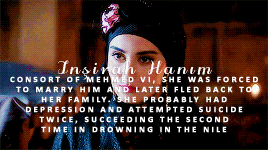
ottoman women who had tragic lives
#history#historyedit#ottoman history#olivera despina hatun#afife kadin (mustafa ii)#insirah hanim#hatice sultan daughter of murad v#mahidevran hatun#behice sultan daughter of abdulmecid i#nazikeda kadin#meylisah hatun
1K notes
·
View notes
Photo






Wedded wives of the Ottoman Sultans
“[I]t is unclear whether an Ottoman prince underwent a wedding ceremony with a woman he took as a concubine or, if he acceded to the throne, whom he elevated to the rank of Kadın. The subject of weddings with imperial concubines requires further study, but given the present state of our knowledge we can say that until the mid-nineteenth century, such marriages formed the exceedingly rare exception in the House of Osman. [...] After the mid-nineteenth century, however, marriages with concubines became more frequent as part of the Ottoman monarchy’s increasing adoption of European royal practice.” -- Douglas Scott Brookes, The Concubine, the Princess, and the Teacher: Voices from the Ottoman Harem
*I stopped at Abdülmecid I, as it is not clear if subsequent weddings had the same value as these above or if they were just ceremonies to welcome the new concubine in the harem
#history#historyedit#kosemedit#haseki hurrem sultan#nurbanu sultan#safiye sultan#akile hatun#unnamed concubine of osman ii#aynulhayat kadin#rahime perestu sultan#bezmiara kadin#haseki humasah sultan#mara hatun#emine hatun#sitti mukrime hatun#theodora kantakuzenos#tamara hatun#olivera despina hatun#asporca hatun#bala hatun#mal hatun#ottomanladiesedit
3K notes
·
View notes